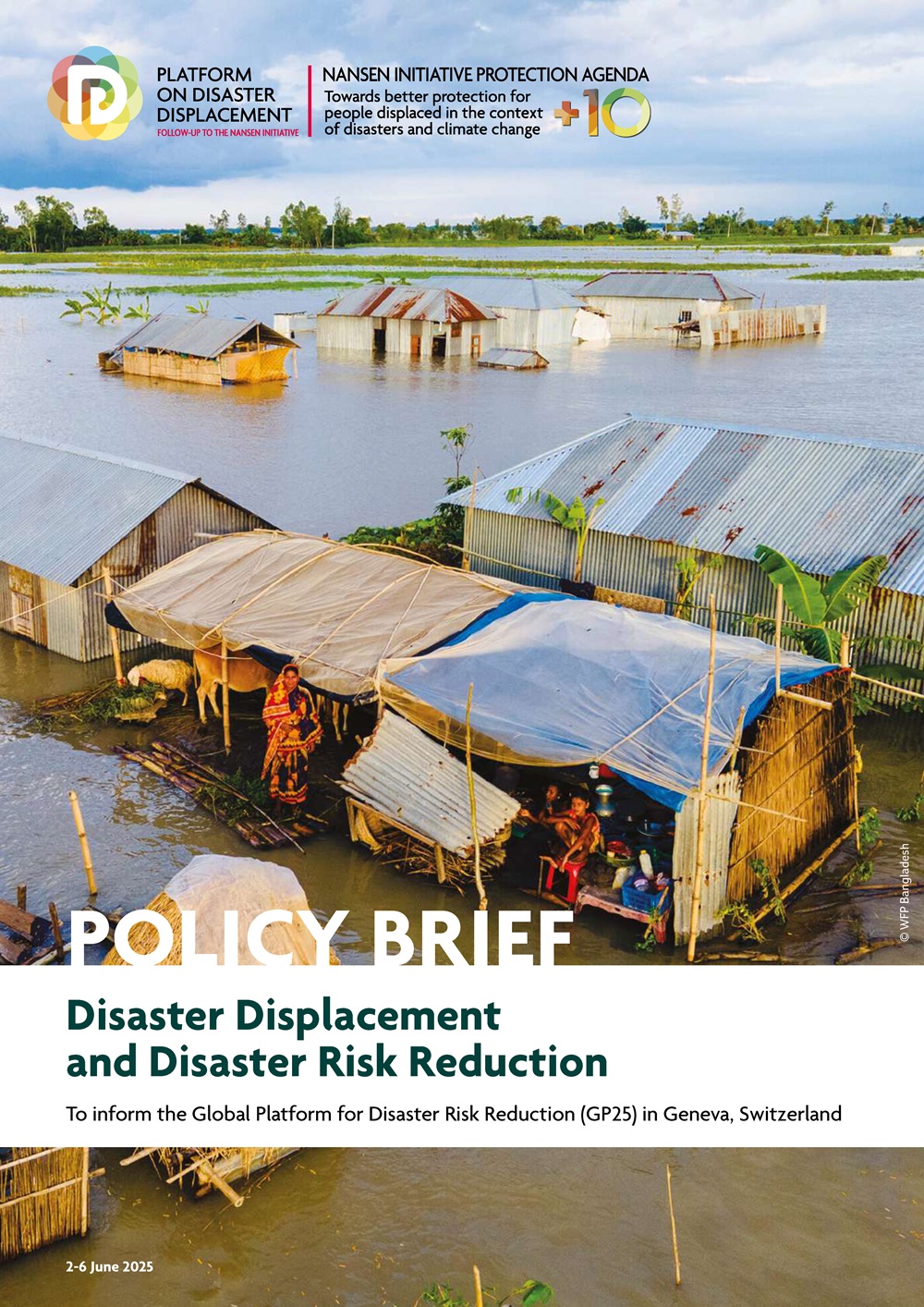Words into Action guidelines – Disaster displacement: How to reduce risk, address impacts and strengthen resilience
Forced displacement is one of the most common and immediate impacts of disasters. Facilitating people’s movement to avoid their exposure to life-threatening situations via evacuations or planned relocations is one of the most effective ways of reducing mortality and injury. Having to flee one’s home, however, particularly when return is not possible for an extended period, tends to increase humanitarian needs and expose people to other significant risks linked to their displacement.
This Words into Action guide offers practical guidance to help government authorities integrate disaster displacement and other related forms of human mobility into regional, national, sub-national and local DRR strategies in accordance with Target (E) of the Sendai Framework, to revise or develop DRR strategies by 2020. It provides basic background information and highlights the various roles DRR and DRM can play in reducing, preparing for and responding to disaster displacement.
The guide is primarily intended to support the work of:
- Regional, national, sub-national and local DRM actors, particularly disaster management agencies, civil defence and emergency responders in addressing disaster displacement risk.
- National and regional governments in ensuring that policies to avoid and manage displacement within and across borders are coherent across all relevant sectors.
- National and sub-national law and policymakers, such as parliamentarians, in regulating the inclusion of measures to reduce and manage disaster displacement.
- Local authorities responsible for land-use planning and urban development in reducing vulnerabilities and exposure that may lead to displacement, and in ensuring disaster displacement risk is included in spatial development plans.
- Others, such as international organisations, civil society, community-based organisations, and academics, may also find it useful.
The guide has three parts. The first discusses the purpose of the project, explains why disaster displacement is a global DRR challenge and provides an overview of how the Sendai Framework addresses disaster displacement.
The second part begins with guiding principles to frame activities under the framework’s four priorities for action relevant to reducing, preparing for and responding to disaster displacement at all levels. Effective practices are illustrated with examples and case studies.
The third part is an annex that provides specific references to disaster displacement and human mobility in the Sendai Framework, a list of key resources, a glossary, cross-references to other Words into Action guides and an overview of how disaster displacement is relevant to various global policies and processes.
As an effort from the international DRR Community and brokered by UNDRR, this document is a product of a long and detailed process of drafting, consultation and review. Upon the initial release of the Words into Action, the document was made available on PreventionWeb for a three-month public review. The purpose of this exercise was to make sure we haven’t overseen aspects that are important to consider. The guide is now available in its final version. Translations into Arabic, French and Spanish will be available soon.
The development of this Words into Action guide on disaster displacement was a collaborative effort, led by the Norwegian Refugee Council (NRC) in support of the Platform on Disaster Displacement’s efforts to ensure that future disaster risk reduction strategies include disaster displacement risk, as set out in the Sendai Framework for Disaster Risk Reduction 2015- 2030. The German Federal Foreign Office, Internal Displacement Monitoring Centre (IDMC), Platform on Disaster Displacement (PDD), UNDRR, UN Migration Agency (IOM), and UN Refugee Agency (UNHCR) were members of the working group.
Support for the development of the guide and its implementation at the national level has been generously provided by the Governments of Germany, Norway and Switzerland.




